Acne is one of the most difficult types of health issues to overcome, mostly because acne can be caused by a variety of factors, including some especially sneaky suspects that you might be eating every day.
What is Acne and Why Does it Happen?
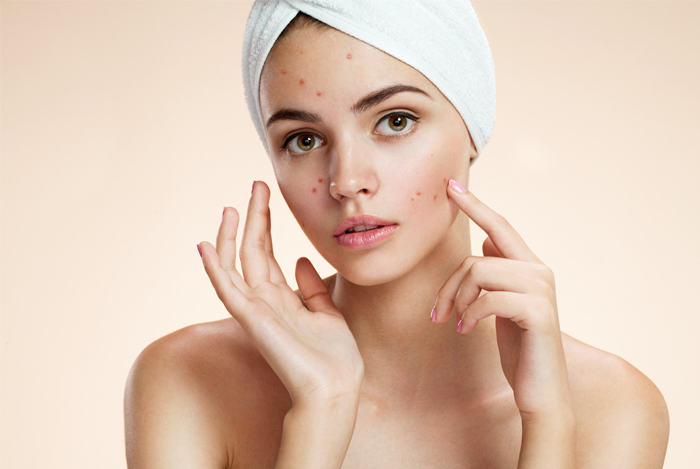
At its core, acne is actually an imbalance in the body. Caused by inflammation, allergic reactions, food intolerances, and even low gut bacteria, acne isn’t always just a hormonal problem.
In fact, although acne can occur from fluctuating hormones, it’s usually something a person is eating or another health issue they have that is leading to that hormonal imbalance and causing the acne.
Of course, there are some other simple reasons that acne can develop, such as wearing oil-based cosmetics or using oil-clogging facial products otherwise.
Individuals who don’t wash their face well each day may also suffer from bacteria build-up on the skin.
However, if you’re taking care of your skin and using proper skin products, you might want to take a look at your diet to make sure that your acne isn’t caused by your lifestyle choices.
How Food Affects Your Face:
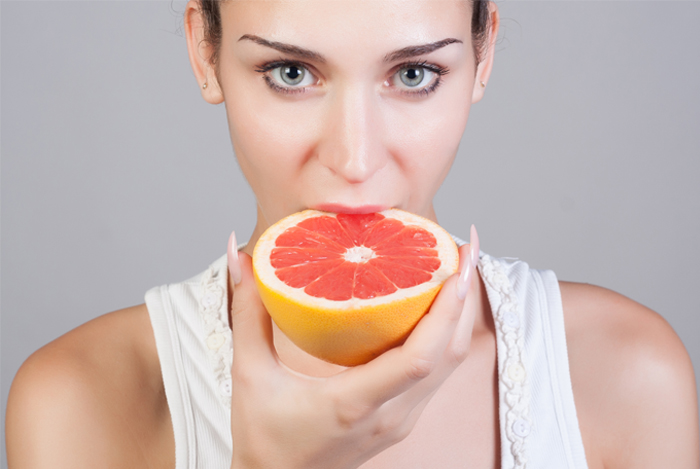
Food carries chemical-like components that react with the cells in our bodies and produce a result in the way we feel as well as in the way we look, believe it or not. There’s a reason people who eat fresh fruits, vegetables, and more natural foods tend to have better skin than those that don’t.
Fresh fruits, vegetables, whole grains, nuts, seeds, and legumes are full of vitamins, minerals, and antioxidants that only plants can provide. Unless you have an allergy to one of these foods (or a food within one of those food groups), then you’re likely to have great skin because of your diet.
On the other hand, a diet high in animal fat, dairy, oil, processed foods, sugar, refined flour, and fast food doesn’t produce the same result. A diet such as this will most always lead to breakouts, aging skin, not to mention weight gain and a risk for heart disease and diabetes.
An alkaline diet rich in fresh foods and low in processed foods is one of the best things you can do in order to care for your skin. When we can prevent inflammation inside the body and give the body what it needs to produce healthy bacteria in our guts as a result, the better we feel and the better our skin looks.
10 Sneaky Suspects That Might be Causing Your Acne:
But not everything is as it seems, especially with acne and diet. So if you’re eating a healthy diet, drinking plenty of water, and still suffering from acne, check your diet for these sneaky suspects that lead to acne, and try the alternatives mentioned for these foods instead.
1. Whole Wheat Bread
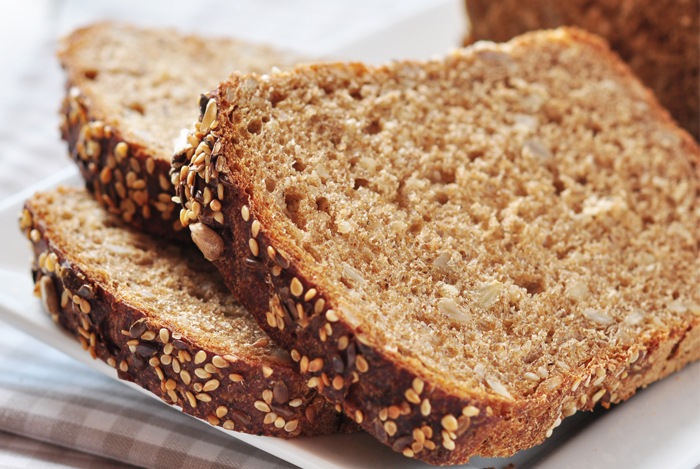
Whole wheat bread is often thought to be the go-to type of healthy bread to use, but that’s not always the case when you look at what’s actually in most whole wheat bread products.
For one, wheat is one of the most allergenic foods you can eat and it’s high in gluten, a protein that causes poor skin and fatigue in many people.
It can also trigger rashes, hives, and joint pain if you’re especially intolerant of it or allergic to it.
Whole wheat bread can also contain oil, sugar, and it’s a natural source of yeast which many people with imbalanced gut bacteria levels are sensitive to.
The Better Alternative:
Instead of whole wheat bread, choose sprouted grain, gluten-free bread instead. This bread contains no flour and is full of live, whole grains that have been prepared into a delicious bread.
There are many gluten-free, yeast-free, and wheat-free varieties of sprouted grain bread that you can try as well as a variety of brands on the market. Look for sprouted grain bread products without added oil and sugar, and enjoy bread the right way!
2. Tomatoes
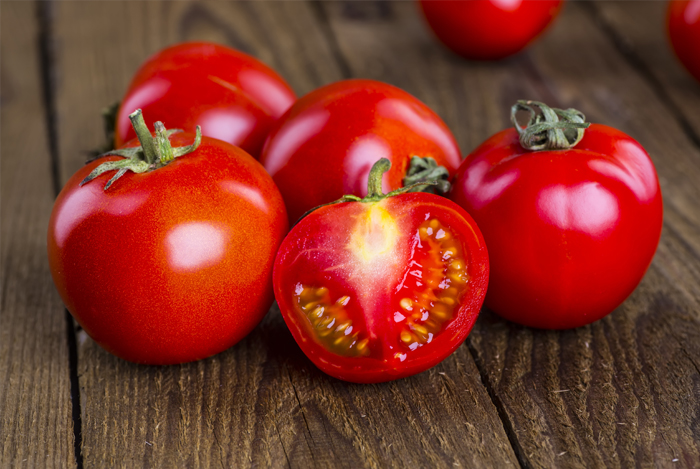
Believe it or not, although tomatoes are touted as a healthy food for your skin, they can also cause acne due to their acidic nature. Tomatoes are especially high in antioxidants like lycopene that boost skin health, but their acidity can still trigger breakouts and acne in sensitive individuals.
Then there’s the nightshade factor to consider about tomatoes and skin health.
Nightshades are a variety of plant foods which includes tomatoes, eggplant, white potatoes, and peppers. This group of plants tends to cause inflammation and acne or digestive upset in individuals sensitive to nightshad foods. So if you eat a delicious tomato sandwich or enjoy grape tomatoes raw as a snack, be mindful of how your skin reacts as well as your joints and skin when you eat other nightshade foods.
The Better Alternative:
It’s hard to beat a sweet and juicy tomato, but you have a few other options you can try instead. If you’re looking for a lycopene source and just want a snack, choose watermelon which is high in lycopene and water while also low in sugar.
For cooked entrées and salads using tomatoes, choose vegetables that are nutrient-dense and not likely to cause breakouts such as grilled or raw zucchini, yellow squash, grilled or roasted beets, or roasted sweet potato rounds. Carrots are also naturally sweet like tomatoes and tasty whether eaten raw or cooked.
3. Dried Fruit
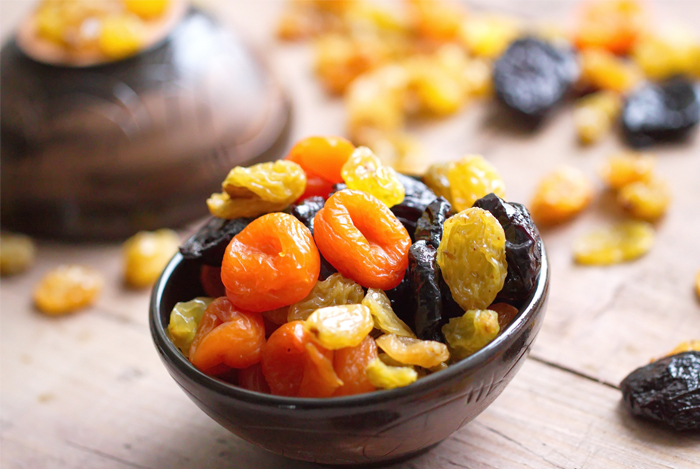
Most natural dried fruits (raisins, mulberries, dates, etc.) are healthy foods rich in iron, potassium, and several other minerals.
However, most dried fruits on the market have added sugars and oil, and when you pair those two ingredients together, you’re asking for a breakout in no time. The body doesn’t like to deal with sugar and oil in most any form, especially when combined. It can cause the sugars in the fruit to ferment in the gut and lead to bad bacterial overgrowth.
The Better Alternative:
When you have the option, always choose fresh fruit over dried fruit since it’s lower in sugar and higher in water content.
If you need a healthy option for a recipe using dried fruit, such as trail mix, choose plain raisins without additives like oil and sugar, and preferably those without sulfites.
Whole, natural dates or raw and organic mulberries or goji berries are also great options if you need a healthy dried fruit to enjoy in a snack or recipe. Just be sure to avoid products that are usual culprits for additives and preservatives such as dried bananas, pineapple, and mango slices. When in doubt, always read the label!
4. Strawberries

Berries are one of the healthiest foods you can eat, but ironically, many people still react to strawberries who are prone to acne. They are a little more acidic than other berries and can trigger a reaction in people sensitive to especially acidic foods.
Strawberries are a great source of Vitamin C and antioxidants, however, so if you find you are sensitive to them, just substitute them for another healthy berry.
The Better Alternative:
Other wonderful berries that are high in Vitamin C and antioxidants include fresh blueberries, blackberries, cranberries, and raspberries. Avoid dried forms of these whenever possible and always choose fresh or frozen. Buying organic is another plus since berries are one of the top culprits for pesticide contamination.
5. Grapefruit

Grapefruit is another healthy, yet very acidic, food.
People sensitive to citrus fruits tend to react the most strongly to grapefruit since it’s the sourest fruit of the bunch.
Test and see how your skin reacts to grapefruit and check supplements for grapefruit extract (which many can include).
If you’re eating other citrus fruits, such as lemons, limes, and oranges, you’ll also want to pay attention to your skin after you eat them so that you can rule out those too.
The Better Alternative:
Grapefruit is another great source of Vitamin C and lycopene which are both great for your skin and immune system. It’s also low in sugar and high in water content.
Choose watermelon, cantaloupe, or pineapple which are all healthy alternatives, the least allergenic, and they’re also packed with nutrients that boost your skin health.
6. Yogurt

Yogurt is the one dairy food that most people think is healthy for them. While some may tolerate it fine since yogurt is fermented and cultured, others may not since it’s a natural source of dairy (cow’s milk).
Cow’s milk is high in natural hormones, even those that are organic and free of added hormones. It is also one of the many foods people are most sensitive to, and it’s one of the leading causes of acne no matter how healthy the dairy product you’re eating may seem.
The Better Alternative:
If you’re really craving yogurt, just choose a non-dairy alternative, preferably one without added sugars. Varieties of all kinds can be found on the market, such as coconut, almond, and soy or rice milk yogurt.
If it’s the probiotics you’re concerned about, coconut water kefir or live sauerkraut are much better sources of probiotics and free of dairy and hormones.
You can also use kimchi, which is a spicier form of sauerkraut that originated in Asia and is now sold here in the United States.
Fermented vegetables and coconut kefir are also better sources of probiotics because they don’t go through the heavy processing that cow’s milk yogurt does and are much lower in calories and free of sugar.
Probiotics can also clear up your skin since they help rebalance your gut health and form new healthy bacteria to grow and thrive.
7. Peanut Butter

Peanut butter is a great source of protein, iron, B vitamins, and let’s be honest—it tastes delicious!
However, you could have an unknown intolerance or even have an allergy to peanut butter which will likely cause acne for you. Most peanut butters are also filled with added sugars and oil which can trigger breakouts on their own.
Before you rule out peanut butter, check the labels of the kind of peanut butter that you normally buy and then experiment with natural products that only include peanuts in in the ingredient list. If you still react to those, then you can move on to a healthy alternative.
The Better Alternative:
Raw almond butter is a great option if you’re looking for another source of protein in your nut butter. It’s also high in magnesium and vitamin E just like peanut butter is, and it’s usually well-tolerated by most people.
Like peanut butter, almond butter should be purchased in its most natural state. Choose raw and organic almond butter, preferably those without any added sugar, salt, or oil.
Raw cashew, walnut, and seed butters are also sold that you can choose from and while they’re a bit pricy, they are usually more nutrient-dense and better for your skin if you’re sensitive to peanuts.
These options also taste delicious and make delicious snacks that you enjoy any way you would use peanut butter.
8. Whole Grain Cereal and Granola (or Bars)
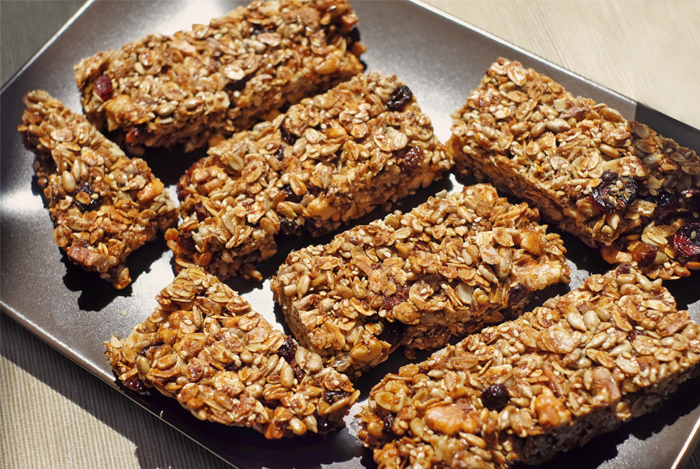
It’s much easier and a lot tastier to eat whole grain cereal or granola bars in place of the whole grains themselves. I think we could all agree on that! However, whole grain cereals and granola bars are not healthy sources of whole grains for several reasons.
One, they are normally always high in sugar and contain added sugars like cane juice, evaporated cane sugar or juice, or something such as maple syrup, honey, or molasses. While it might seem like these are better than sugar, the truth is they have the same effect in your body once consumed.
All added sugars spike glucose levels and can lead to an imbalance of insulin, the hormone that when out of balance can trigger acne, breakouts, and weight gain.
Two, whole grain cereal and granola bars are also more insulin-spiking foods than whole grains because they’re so highly processed. Many of these products also contain added oils, salt, and other ingredients like flour which can all spike your blood sugar levels and clog your pores.
The Better Alternative:
There’s no better alternative to whole grain cereals than oatmeal, and you can make your own homemade granola bars or cookies with simple ingredients such as oats, mashed banana, cinnamon, raisins, and a raw nut butter.
Oats are also one of the best foods you can eat for your skin health because they soothe inflammation and redness, and they’re wonderful for your blood sugar levels. Choose rolled, extra-thick cut or steel cut oats as the healthiest option.
9. Salsa
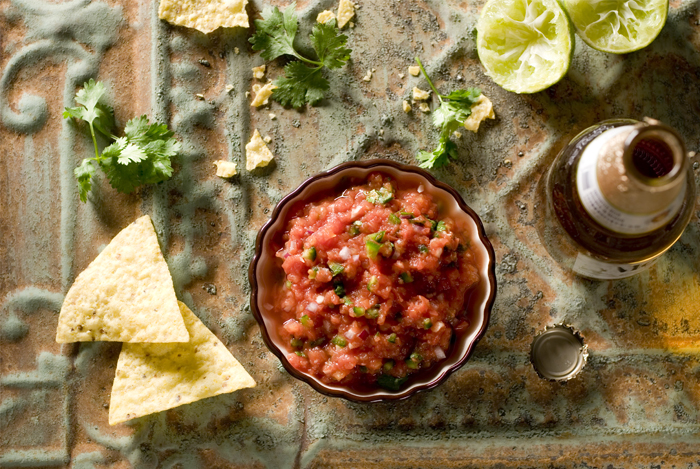
Salsa is so good on everything from tortilla chips to salad, and it’s a great dip to even enjoy on veggies. Unfortunately, it’s also normally high in sodium, it’s a nightshade fruit, and it’s naturally acidic meaning it can cause breakouts in individuals sensitive to nightshades, salt, acidic foods.
The Better Alternative:
You can actually make your own salsa with other fruits besides tomatoes.
Popular options include mango salsa and pineapple salsa, and they can be made with lower amounts of sodium or no sodium which make them better options to salsa products sold in stores.
10. Nori
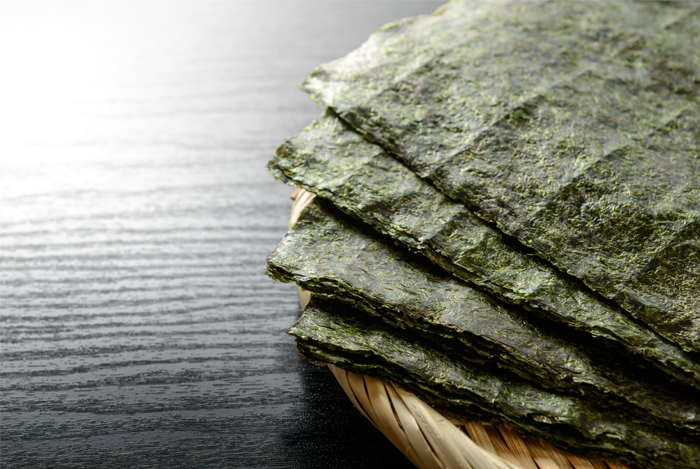
Nori is a healthy type of seaweed often sold in sheets, sea snacks, and a variety of other seaweed products on the market. Nori seems to be one of the latest popular food fads because it makes for delicious sushi rolls as well as a low-carb wrap for those looking to avoid flour-based wraps.
However, nori is very high in iodine, a mineral we definitely need in our diets. The problem is that iodine is very easy to get enough of and too much can pose a variety of health problems, including acne and breakouts.
Iodine is naturally found in all seaweed products and is important for thyroid function. However, nori is one of the highest sources which makes it easier to overdose on.
The Better Alternative:
For wraps, choose raw collard or kale leaves, or even romaine leaves in place of nori sheets. For snacks such as seaweed snacks, make or buy kale chips instead.
To get your daily dose of iodine in a much lower, safer form that won’t cause acne, choose raw dulse flakes or a couple serving of kelp flakes on your salads or entrées each week; both are lower in iodine but still great sources. They’re also some of the best low-sodium alternatives to salt that make them useful on salads, dips, and cooked dishes.
Some people also enjoy using spirulina in smoothies which is another natural source of iodine (and several other wonderful nutrients), and it’s much less likely to cause breakouts. In fact, spirulina may be a food you should add to your diet in order to clear up your skin!
Don’t Forget …

So there you have it! These tips to avoid sneaky suspects you might be eating every day will get you on the right start to better skin, but don’t forget that you’ll also need to drink plenty of water, eat as much fresh food as possible, and get plenty of sleep for optimal skin health.
For more tips on how to improve your skin, check out these natural ways to improve your beauty directly through your diet!
The post Got Acne? Here are 10 Sneaky Suspects You Might be Eating Every Day appeared first on Nutrition Secrets.
http://www.nutritionsecrets.com/got-acne-here-are-10-sneaky-suspects-you-might-be-eating-every-day/
No comments:
Post a Comment